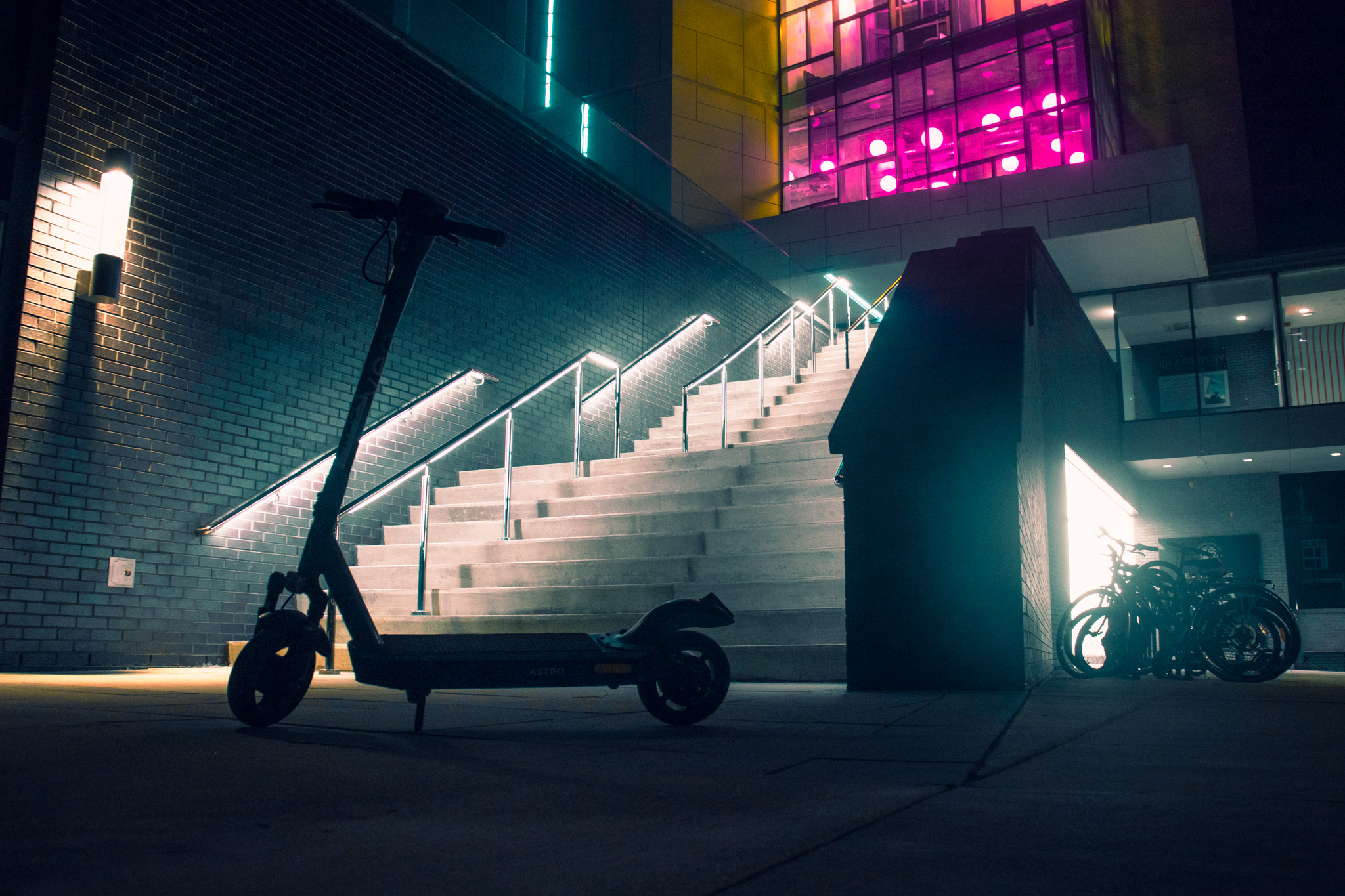Students who find themselves traveling around the University of Maryland’s campus alone after dark said they wish VeoRide vehicles were available to rent after 10 p.m. for a faster and safer way to travel.
On campus, the rideshare e-scooters and e-bikes do not operate from 10 p.m. to 5 a.m. because darkness can limit visibility, a spokesperson for this university said in a statement to The Diamondback. Off-campus, VeoRide scooters are available at all hours. But some students are questioning the on-campus curfew, saying it raises its own safety concerns.
“To not have a Veo late at night when I’m often Veo-ing, especially back from McKeldin or from a friend’s house, or whatever, has been very annoying for me,” Olivia Dinkel, vice president of Terps for Bike Lanes, said. “It’s just so unbelievably convenient.”
Dinkel, a senior management major, does not have a bike on campus and prefers to get around on VeoRide vehicles. The solution to darkness limiting visibility is improving lighting, not imposing a curfew, she said.
“As a woman on campus, you’d think that the number one time that I would need a Veo is to travel across campus at night, when I’m feeling unsafe,” Dinkel said.
[Food delivery robots could soon come to UMD]
Nick Marks, president of Terps for Bike Lanes, said the curfew policy is concerning because there is no hard data proving on-campus VeoRide accidents happen more because of limited visibility at night.
The leading causes of micromobility accidents on campus are not known because there is no comprehensive tracking system. The University of Maryland Police Department records all reported accidents, but there is no requirement to report accidents.
This university’s Student Government Association has an incident report form that has received around 70 responses, but with more than 1,700 micromoblity vehicles registered on campus, those reports may not be exhaustive.
Access to VeoRide is useful when students find themselves in sudden need of transportation, Marks — a junior education major — said.
“I think for them to install this curfew, that disproportionately affects women coming home from bars and people who might need to get home in case of emergency,” Marks said. “It’s not rooted in statistics, which is the complete opposite of how you’re supposed to not only approach public policy, but transportation policy.”
[UMD community hosts event series to recognize Mental Health Awareness Week]
In 2020, after its first trials for rental scooters, the United Kingdom’s transportation department found in interviews and focus groups that many female participants said they felt using an e-scooter was safer than walking in the dark.
Paisley Brockmeyer, the SGA’s transportation and infrastructure director, said she understands why people would want the curfew lifted, but also sees its purpose.
“I know sometimes I don’t want to be walking alone. It’s easier to just be on the road and going faster,” Brockmeyer said. “But unfortunately, we do have a big nightlife scene that would make [lifting the curfew] difficult.”
In a statement to The Diamondback, a representative for VeoRide said it supports its program partners at this university.
“We… trust them to implement rules that are best suited for the campus community,” the statement said. “From our experience operating markets nationwide we have observed certain benefits to having access to shared scooters and bikes at night.”



